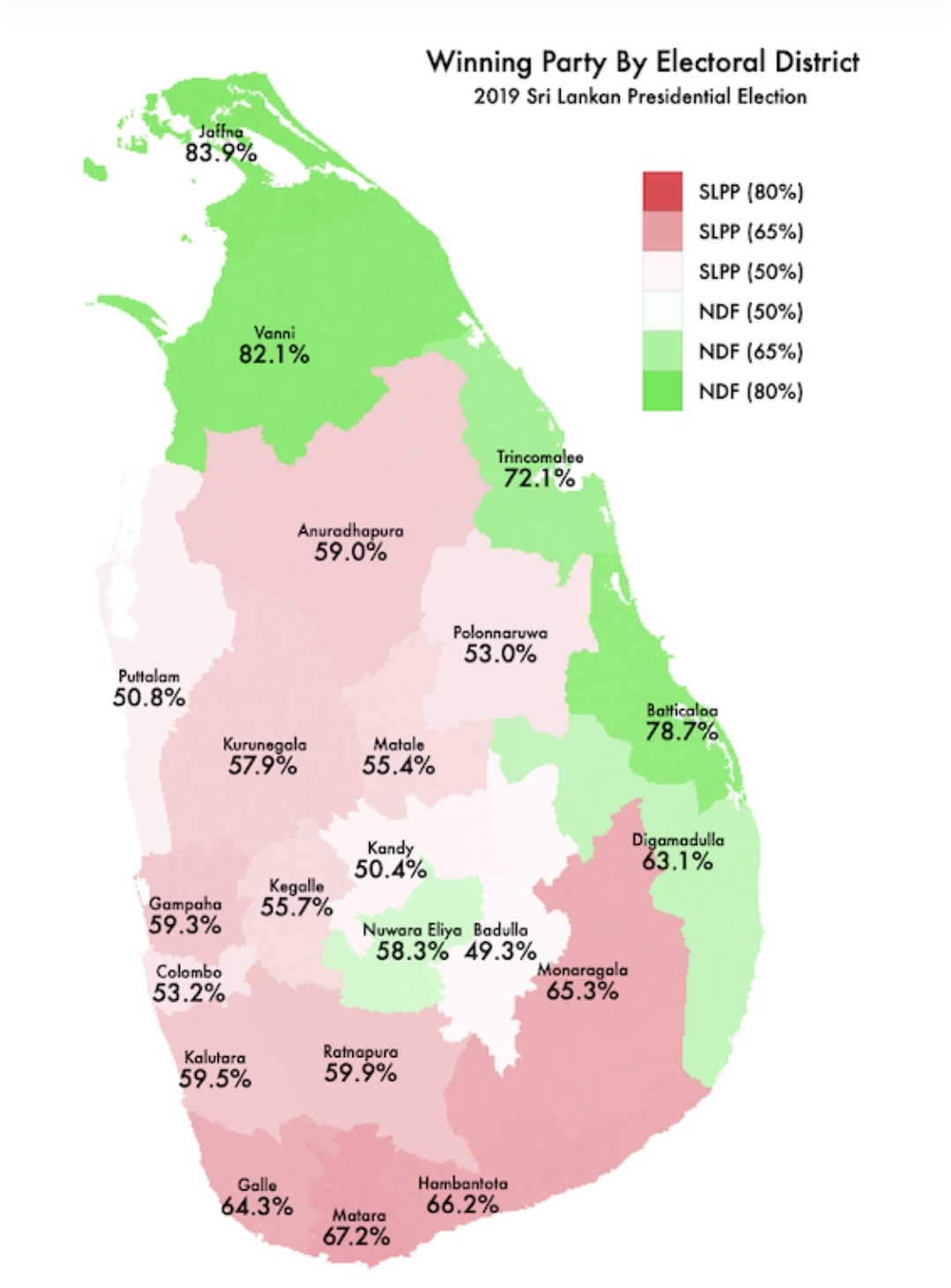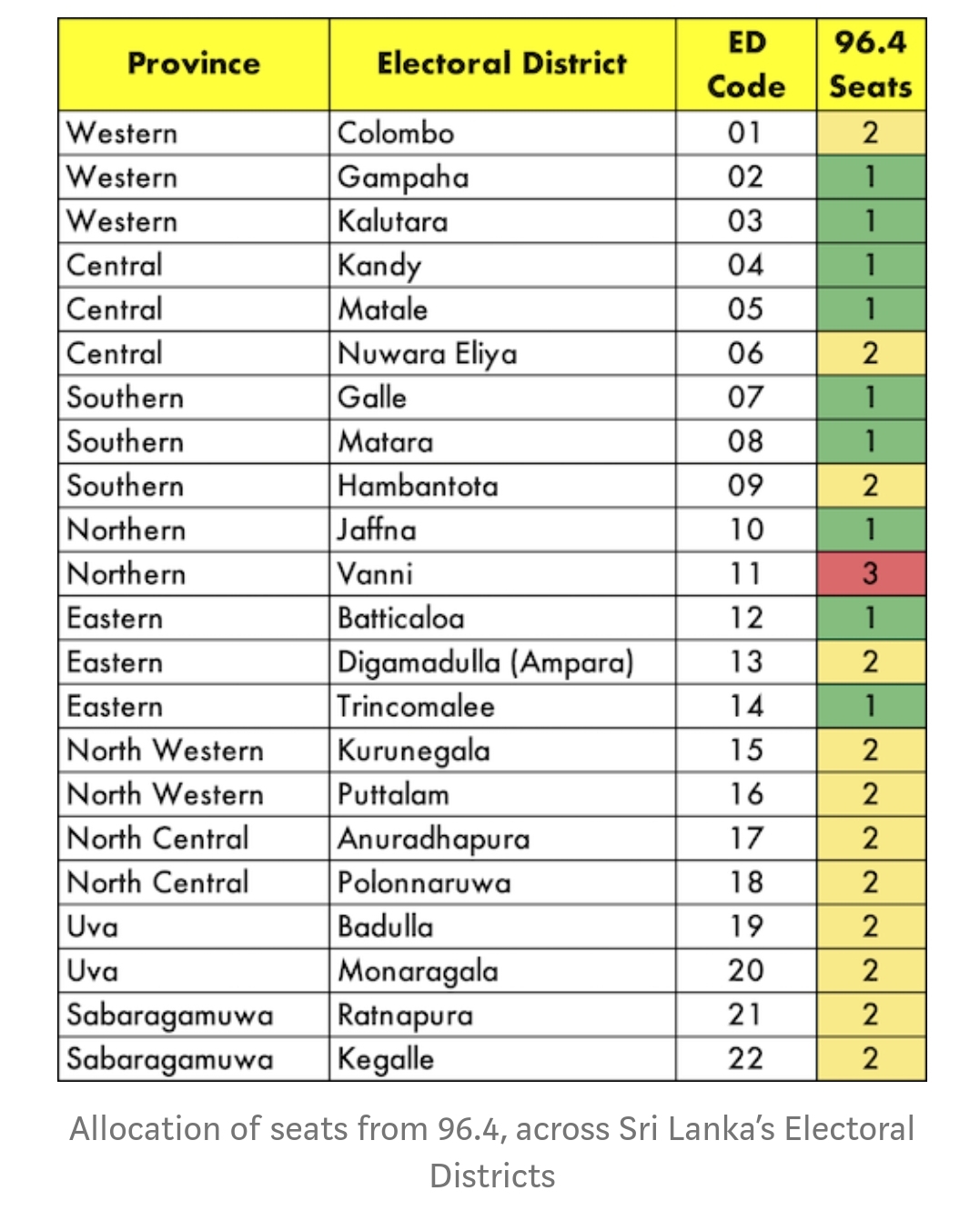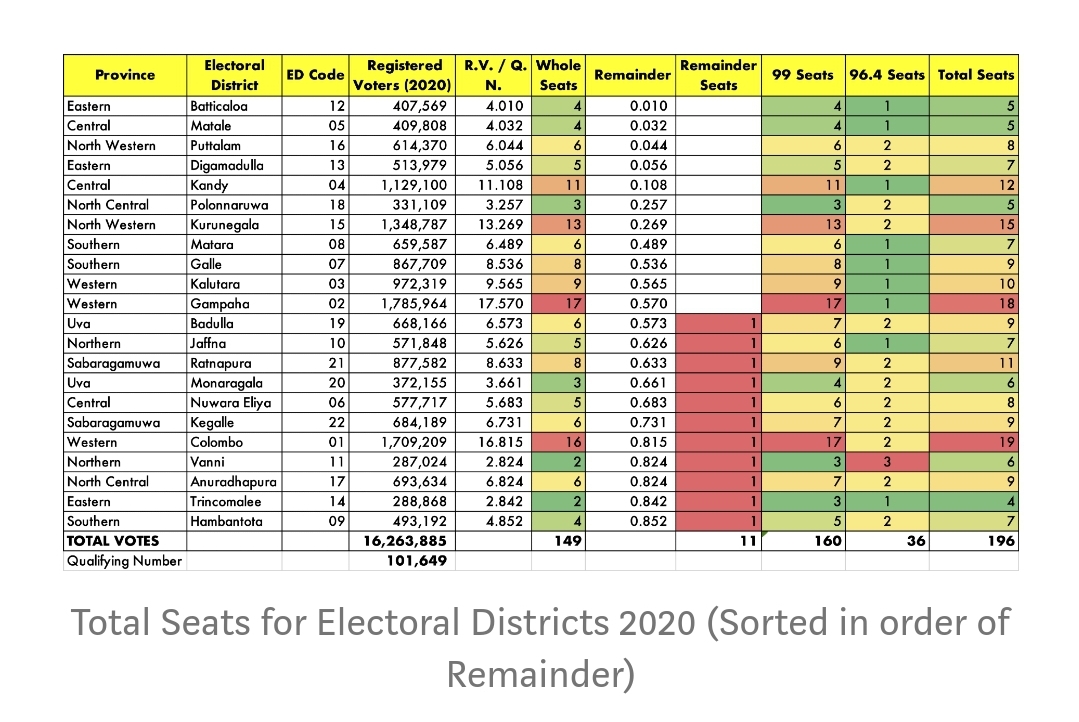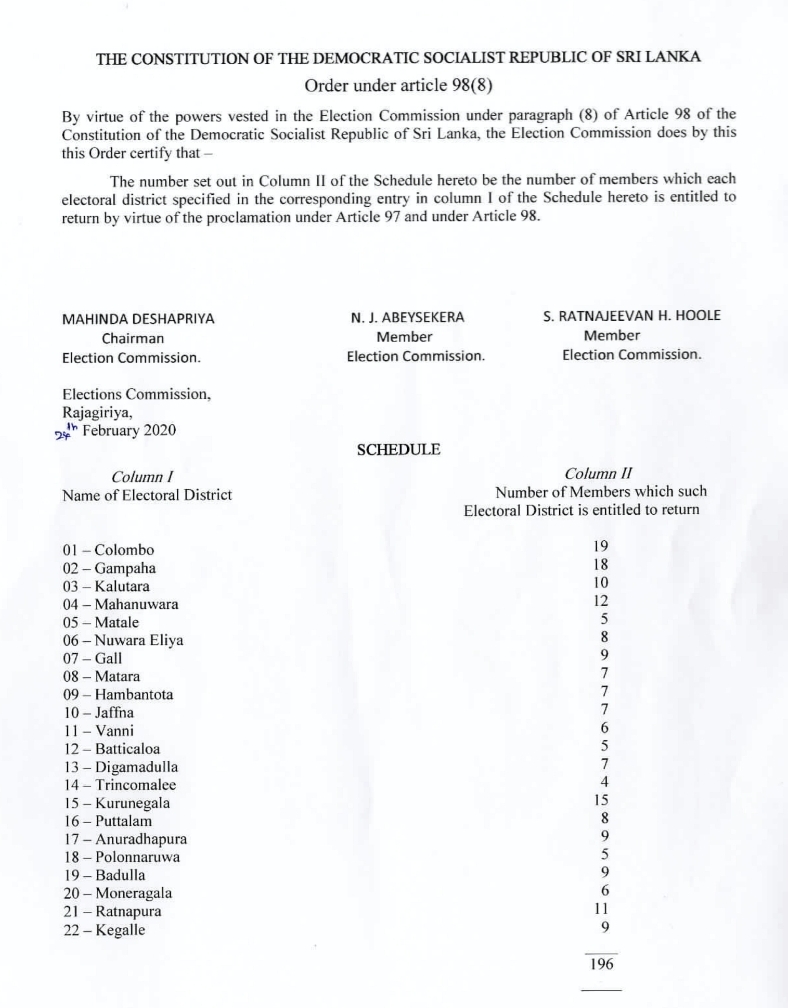“Will the SLPP get Two-Thirds?” is the “Big Question” of the 2020 Sri Lankan Parliamentary Election. I don’t hope to answer this question, because I don’t know how.
On the other hand, if you are interested in this question and other questions about #GenElecSL2020, understanding how elections work is key. Particularly, how seats are assigned.
Articles 96, 98, 99 and 99A of the Sri Lankan Constitution, collectively provide all the information you need to understand parliamentary elections in Sri Lanka. This article is based on my own notes of these articles, together with some illustrative examples and complementary data. Hope they would be useful to you too.
[Disclaimer: I’m no lawyer, nor constitutional expert. My only qualification for writing this article is that I can (to a point) read and write English. Hence, take my notes with a pinch of salt].
Article 96. Electoral Districts (EDs)
1. Sri Lanka must divide into between 20 and 25 Electoral Districts (EDs). A Delimitation Commission defines the districts, their names and their boundaries.
Currently, Sri Lanka has 22 EDs.

2. An entire province could be one ED. Or divided into two or more electoral districts.
Currently, no province is a single ED. The Western, Central, Southern, and Eastern provinces divide into three electoral districts each. The Northern, North-Central, North-Western, Uva and Sabaragamuwa provinces divide into two each.
3. The boundaries of ED respect the boundaries of Administrative Districts (ADs). Hence, either a) an ED is the same as an AD; or c) an ED is a combination of two or more ADs; or c) an AD is a combination of two ore more EDs.
Sri Lanka has 22 EDs and 25 ADs. Currently, the Jaffna ED is a combination of the Jaffna and Kilinochchi ADs. The Vanni ED is a combination of the Mannar, Vavuniya and Mullaitivu ADs.
All the other 20 EDs are the same as an AD.
Sri Lanka has no AD which consists of multiple EDs.
4. The Delimitation commission assigns four seats to each province. And divides these among the EDs.
In this way, Sri Lanka’s nine provinces get 36 seats. The current division among Eds is as follows:

5. Delimitation Commission makes decisions by majority. If there is no majority, the Commission’s Chairperson decides.
6. The Delimitation Commission’s Chairperson communicates decisions to the President.
Article 98. Number of members returned by the several electoral districts and their apportionment among such electoral districts.
1. 196 Seats divide among the Electoral Districts (EDs).
2. Of the 196, 36 divide as described in 96.4.[i.e. four per province, and divide amongst the EDs in each province].
3. Paragraphs 98.4, 98.5, 98.6, 98.7 describe how the remaining 160 [i.e. 196 minus 36]seats are divided.
4. The “Qualifying Number” is defined as follows:
“Qualifying Number” =
“Total Number of Registered Voters in entire Country"
/ 160” ROUNDED DOWN
For example, there are 16,263,885 registered voters for the 2020 General Election. This gives a qualifying number of 101,649.
5. Each ED is assigned “Total Number of Registered Voters in ED / Qualifying Number — rounded down” seats. [Let’s call them “Whole Seats”]
For example, Galle has 867,709 registered voters. Hence, it’s Whole Seats can be computed as follows:
Registered Voters / Qualifying Number = 867,709 / 101,649 = 8.536Whole Seats = 8 Remainder = 0.536
6. Any balance seats assign in order of EDs with the largest fractional remainder of “Total Number of Registered Voters in ED / Qualifying Number”. [Let’s call these Remainder Seats]
In 2020, 149 seats were assigned as Whole Seats, leaving 11. These were assigned to the EDs with the highest fractional remainders.
The whole seats, remainder seats, the seats from Article 99, the seats from Article 96.4 and the total number of seats for the ED, as as follows:

This method of allocating seats to districts is known as the Hare Quota Largest Remainder Method. As we shall see later, this is also how seats allocate to parties in elections.
7. If there is a tie, i.e. if two or more EDs have the same fractional remainder, seats are assigned by lot.
8. The Election Commissioner publishes the above information in a Gazette.
